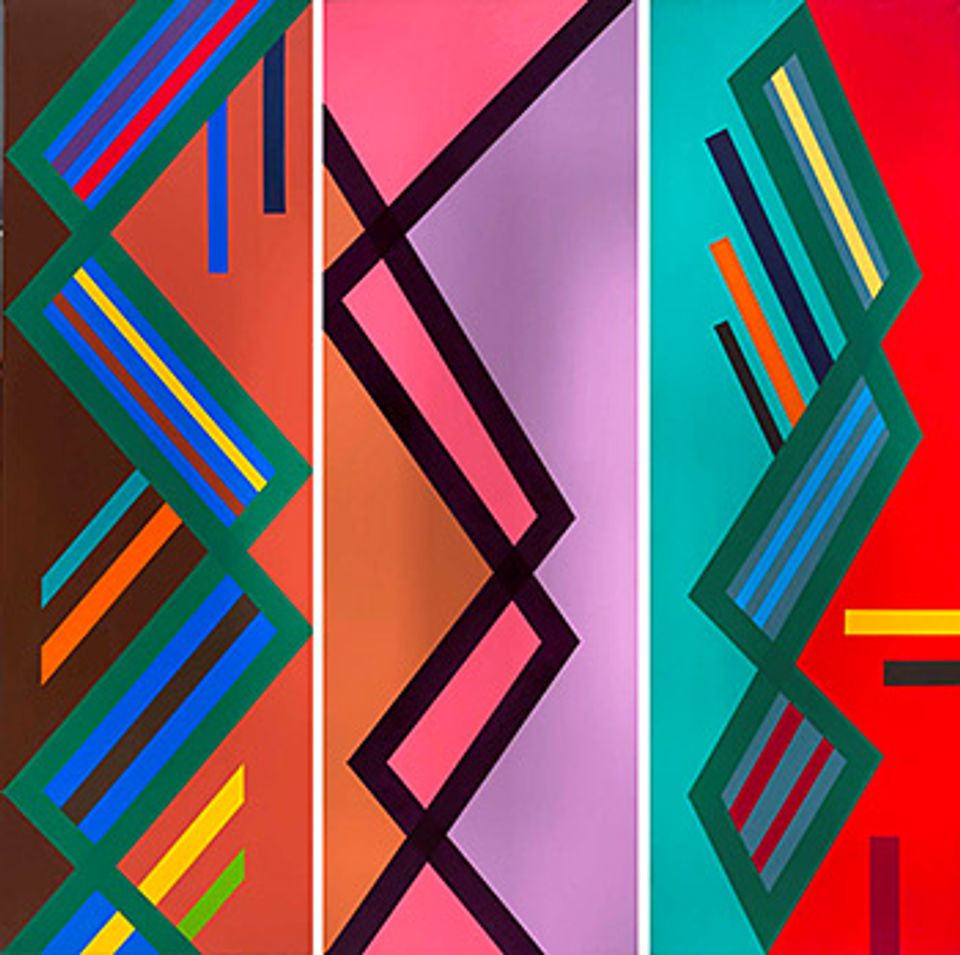
Freddy Rodríguez's artworks: left: Danza Africana, center: Amor Africano, and right: Danza de Carnaval
The exhibition Our America: The Latino Presence in American Art will open next fall on October 25, 2013. This may seem like a long time away, but E. Carmen Ramos, the museum's curator for Latino art, is already hard at work preparing for this exhibition, visiting artists and acquiring new artworks for the American Art Museum's collection. Our America will present more than 70 works by some of the major Latino artists working since the 1950s, and will be drawn entirely from the museum's permanent collection. It will explore how Latino artists have tackled classic American themes, created new images of their communities, and actively participated in the artistic movements of the United States. Over the coming months, Carmen will discuss some of the exciting artworks that will be featured in this occasional series.
Even before Piet Mondrian painted his iconic jazz-themed Broadway Boogie Woogie in 1942-43, music and abstraction have been closely allied. Wassily Kandinsky titled many of his early twentieth century abstractions Improvisations or Compositions in part because they were inspired by his love of music. In the United States, artists Stuart Davis, Arthur Dove, Jackson Pollock, and William T. Williams, among others, were taken by jazz as both an expression of American cultural uniqueness and as an analogue to their divergent interests in color, line, space, and form.
Last year the American Art Museum acquired three music-inspired canvases by Freddy Rodríguez, an artist who immigrated to the United States from the Dominican Republic in 1963. Arriving at the youthful age of 18, Rodríguez incurred his entire artistic education in the United States, where he was drawn to Mondrian's works on view at The Museum of Modern Art and the minimalist painting of younger American artists like Frank Stella. These antecedents inspired Rodríguez's own geometric abstractions, which increasingly began to reference aspects of his own cultural background. I sought out Freddy Rodríguez's early works for our collection, not only because they show a Latino artist participating in an acknowledged American art movement—hard edge minimalism—but also because his paintings challenge the notion that abstract painting is about pure line and color and form. Rodríguez works affirm that abstraction can also convey rich cultural meaning.
Painted in the early 1970s, Rodríguez's works were executed during a time when Caribbean migrants in New York imported music from the islands and when salsa, a musical form born from an amalgam of Cuban, Puerto Rican, Dominican and US-based rhythms, burst on the scene. Rodríguez's three slender canvases feature bold color and zigzagging lines to convey the energy of Dominican musical traditions such as merengue. What I find striking about these paintings is their intense physicality--evoked by titles Danza Africana and Danza de Carnaval that refer to dance. At eight feet tall, the paintings are close to life size and their crisscrossing lines suggest the movement of dancing couples. One of the canvases, Amor Africano, even depicts fleshy colors like pink and dark beige. These works affirm the strong African foundation of Caribbean music. They also communicate that some musical traditions are not simply meant to be heard but experienced through the body.
To learn more about Latino music in the United States, you can explore the following music-themed exhibitions previously presented by our Smithsonian colleagues at the Smithsonian Latino Center and the National Museum of American History.


















